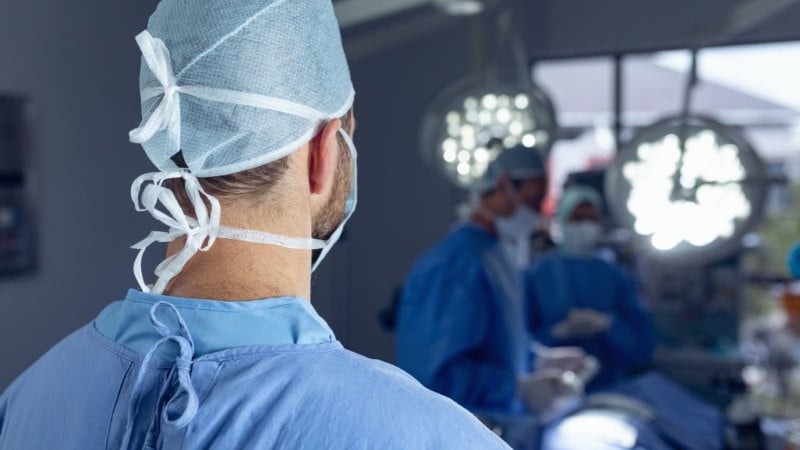
The current Code Brown situation in Victoria is a pain – literally – for so many people awaiting surgery.
As Omicron continues to spread so rapidly through the community, Victoria’s health system is under severe pressure and the incredible health professionals working in the hospital system find themselves under even more pressure, with (up until recently) increasing hospitalisations and decreasing staff numbers due to COVID illness and close contact situations. The Code Brown is designed to prioritise resources so that those who need urgent healthcare can continue to receive care.

I am not about to debate the decision the government has made, but the greatest effect the Code Brown decision has had on our own SSPC demographic relates to the reduction, or temporary ban, on elective surgery. We have so many of our own clients who have been forced to delay their upcoming surgical procedures, with no certainty around when their surgery may be performed, with the added worry of ever-increasing wait lists and a back logged system when elective surgery resumes.
The only thing I will say about the Code Brown situation is that the word “elective” is a real issue in my mind. There are so many people who are waiting on surgery that is really not “elective”, but more in the “necessary” category. To me, elective means that you have the choice between having surgery or not having surgery, with the decision to not have surgery not having a significant detrimental health outcome, short term or long term. Let’s take the case of an ACL reconstruction (when a person has ruptured one of the main stabilising ligaments in the knee, the Anterior Cruciate Ligament). ACL reconstruction for years has been thought of as essential surgery, and pretty much the sooner the better in terms of having the surgery. I heard this being debated on radio this week with the hosts saying it is incredible that an ACL reconstruction is not considered essential and still being performed under this Code Brown system. I beg to differ! For the vast majority, choosing to have an ACL reconstruction is based around the desire to return to sporting activity, and being a 10-12 month rehabilitation the “urgency” stems around the thought that every month you wait for surgery sets you back another month into your next sporting season. In the scope of life, this is hardly essential or urgent. People can live happy, dynamic, pain-free lives without an ACL. In fact, it is absolutely possible for some to return to their previous sporting activity without an ACL, and there is also some possibility that ACL’s can heal themselves if we give them time. In my mind, this is the exact sort of surgery that can be delayed without great impact on that person’s life.
Now let’s compare it to someone waiting on a total hip or total knee joint replacement. These poor people are often at the end stage of coping with months and years of pain and dysfunction. Once a person is in line for a joint replacement, they are usually struggling big time, and the state of the joint is having severe impact on their quality of life. With the pain and reduced mobility comes less fitness, less motivation to move, weight gain and loss of muscle tone, low mood, poor sleep – and the list goes on. In reality, the need for the surgery has passed from elective to necessary! Even just in our own small SSPC population we have some people who are desperately in need of this surgery. But we do put great hope in our amazing surgeons that as soon as they are allowed to pull their scalpels out again, that the “necessary” people will be pushed far higher up the list than the truly “elective” surgeries.
Anyway, as with so many aspects of life over the last 2 years, I feel we need to try hard to find some positive out of the situation we find ourselves in. There was a great social media post by Dr Peter Larkins, a Sports Physician we commonly refer to here at SSPC, and his post is outlined below:
“the ongoing cessation of elective surgery is causing great distress to patients, staff & surgeons – consulting days are spent explaining the delays & reassuring my patients.
This is the perfect time to set yourself up for better surgery outcomes with some simple planning
- Understand the procedure you are having
- Develop a good relationship with your physiotherapist
- Do supervised pre-op rehabilitation exercise including STRENGTH work for surgery area
- Set realistic expectations for post-op recovery time frames
- Plan your post-op rehab program to commence as soon as practical after the procedure
- Maintain a positive attitude to your recovery
Ref: drpeterlarkins.com
This is a brilliant way to approach this current delay to necessary surgery. Over the years one of the greatest improvements in our physio approach to pending surgery is to allocate critical time in the PRE OPERATIVE period to educate our clients – as brilliant as our surgeons are, there’s often not enough of the rehab information that patients are aware of – there is so much to gain by having realistic expectations around what to expect when you wake up, what your first few weeks will be like, how much time you should be devoting to exercises, how long until you can walk/drive/return to work/expect minimal pain etc – This where we can do a really great job as physio’s – working alongside our surgeons in supplying that additional critical information that makes your post op recovery so much better.
Along with the education, without doubt we are seeing much better post-op results also when people devote a good amount of time to some structured, tailored (and at least occasionally supervised) exercise. The old school thought of “wait as long as you can until you get your joint replaced” is long gone. People were losing so much quality of life during what was otherwise prime years, putting up with their debilitating injury, compromising life function, and becoming weaker and weaker, stiffer and stiffer. Not to mention the stresses placed on other body parts due to compensation – how many people who battle terrible knee and hip OA for too long end up with ongoing back pain that haunts them long after their joint is replaced?
What we can offer now to all of you waiting for the operating theatres to open up, is some real hope and some real positivity. Utilise this time to get yourself a good exercise program as no matter how bad your joint might be, there is ALWAYS an exercise to do that will make a difference. The healthier and STRONGER you can get your whole body prior to surgery (not just the muscles around your painful joint) the better your post op outcomes will be.
So don’t waste time – see your physio now and you may find that the Code Brown is the best thing that could have happened in terms of helping you have the best post op outcome you possibly can.
Anthony Lance
SSPC Physiotherapist
You might like these other resources
Why Do My Joints Ache In Cold Weather?
11 June 2025
The Role of Ice in Managing Acute Sporting Injuries
17 September 2024
Are Your Bones Strong Enough?
28 May 2024





